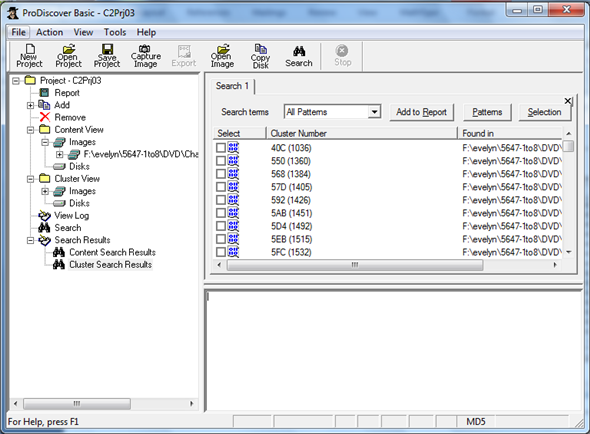
- #Prodiscover forensics file formats pro
- #Prodiscover forensics file formats plus
- #Prodiscover forensics file formats zip
- #Prodiscover forensics file formats windows
#Prodiscover forensics file formats zip
This includes: DOC, PDF, PPT, XLS, RTF, WPD, SWF, DJVU, JPG, GIF, PNG, TIFF, MP3, DWF, DOCX, PPTX, XLSX, MHT, ZIP and more. OSForensics can index the content of a huge variety of file formats. Exclusion searches (aka negative searches) With powerful pre-indexed searching capabilities offering full-text searching of hundreds of file formats, OSForensics offers:

OSForensics™ includes one of the fastest and most powerful ways to search within the contents of all the files on a hard disk, powered by the acclaimed Wrensoft Zoom Search Engine. This includes the Timeline View which allows you to sift through the matches on a timeline, making evident the pattern of user activity on the machine. Results are returned and made available in several different useful views. You can search by filename, size, creation and modified dates, and other criteria. Do this for both files found on the hard drive or directly from active memory of processes running on the system. Extract text strings from binary data allowing you to find text hidden in otherwise unreadable chunks of information. This can help locate “ Dark Data” that the user has tried to concealīy making a record of the details of the files on a hard drive a comparison can be then done at a later date to find out what has been changed. This identifier can be used both to verify a file has not been changed or to quickly find out if a file is part of a set of known files.īy looking at the contents of a file OSForensics can identify what kind of file it is and then figure out if the file has an incorrect extension. Using advanced hashing algorithms OSForensics can create a digital identifier that can be used to identify a file. OSForensics Extract forensic data from computers, quicker and easier than ever.
#Prodiscover forensics file formats windows
Click File Name of any file (in the right side pane) that you think might be good evidence to present in court.OSForensics provides one of the fastest and most powerful ways to locate files on a Windows computer.Double click the name of any Folder that you want to retrieve to check out.Now browse for any files that you think may have evidence to help solve our hacking mystery or that may incriminate our suspect.Voila! All of the files that were ever on the hacker’s flash drive are now available for you to see in the ProDiscver window…EVEN THE DELETED ONES!ĭeleted files will have a red X beside their names with all details about creation, modification and deleted dates.Click on path to file “Camp Mystery Case” ending in.
#Prodiscover forensics file formats plus


#Prodiscover forensics file formats pro


 0 kommentar(er)
0 kommentar(er)
